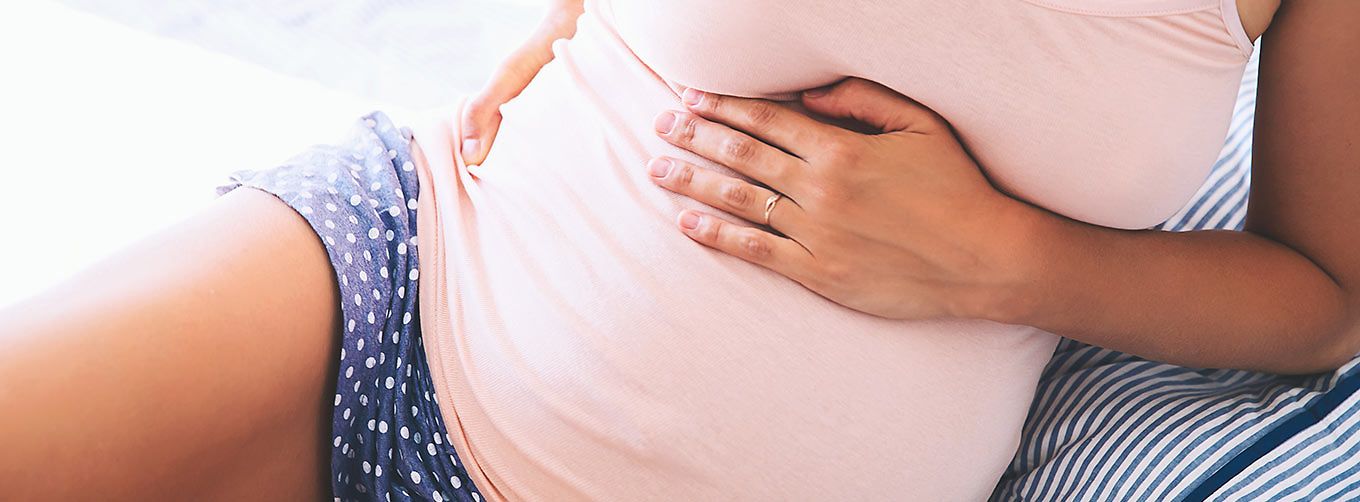Am I in labour? Chances are, you’ll ask yourself this question a few times in the run up to due day. Here’s how to tell whether it’s actually happening

Your phone buzzes. Another message from a friend excitedly asking: “Any news yet?” If they’re on tenterhooks, then your anticipation about meeting your baby is off the scale. There are some classic early signs of labour, but there are some red herrings to know about too, says Boots Parenting Club midwife, Emma Mills.
First up, the “show”. “This is when the mucus plug that sits in your cervix comes away. This can happen two weeks before, two days before or even during labour. It indicates that things are progressing, but not necessarily that labour is imminent,” she says. “Another false sign is when baby’s head engages in your pelvis. It means things are moving, but this can happen from 36 weeks of pregnancy.” And don’t be fooled by Braxton Hicks contractions. “These are painless tightenings where your tummy goes rock hard. It’s an odd sensation, but it’s your body practising,” says Emma.
So what are the true signs labour is approaching?
Contractions
These are the biggies that tell you it won’t be too long (hopefully!) before you meet your baby. “It starts with irregular contractions. You might have one every 10 minutes, or one every 30 minutes followed by two within 10 minutes. It’s the regularity of the contractions that gauge whether you’re in established labour. Once they’re roughly five minutes apart, lasting 60 seconds, this is when to call your maternity unit,” says Boots Parenting Club midwife Emma Mills. And yes, we’re afraid they will get stronger as labour progresses, but it means you’re going in the right direction!
How does it feel?
Your muscles tighten, your tummy hardens and the pain increases. When the muscles relax, the pain fades and the hardness eases off. As Alice, 38, mum of one puts it: “For me contractions felt like standing in the sea, getting knocked down by a wave, then getting back up again.”
Tip: “I always tell women that every contraction you have, you’re never going to have it again. That’s one down, never to be experienced again. This really focuses the brain,” says Emma.
Lower back pain
Remember that horrible backache you often get during your period? Well say hello again, because for many women this is what contractions can feel like during early labour. It will probably feel different from that tired ache you’ve been feeling throughout your pregnancy, and you may not even recognise it as contractions at first!
How does it feel?
“Most of my pain was in my lower back. At times the pain was dull and heavy, other times it was sharp and took my breath away. I found that listening to The Greatest Showman soundtrack helped refocus my mind!” says Tara, 36, mum of twoز
Tip: “Try getting down onto all fours because this really helps to relieve the pressure around the coccyx,” says Emma.
Waters breaking
Your baby grows in a sac of amniotic fluid in the womb, and your waters breaking is that fluid draining out of your vagina. “This usually happens before labour kicks in, and allows baby to move down and press on the cervix which starts off the process, but it can also happen during labour. The important thing is that if your waters break, call your maternity unit. They’ll ask you to pop a pad on, ask you the colour of the water – it should be pale and straw-like – and then they’ll review it. If you don’t go into labour after your waters break, there may be a risk to the baby of infection so you’ll need to be monitored,” says Emma.
How does it feel?
Like a sudden gush of water you can’t control, or a slow trickle.
Tip: “My waters broke when I was in bed so in the run-up to due date, swap your nice bedding for something you don’t mind getting messy. And have lots of towels to hand,” says Helen, 31, mum of two.